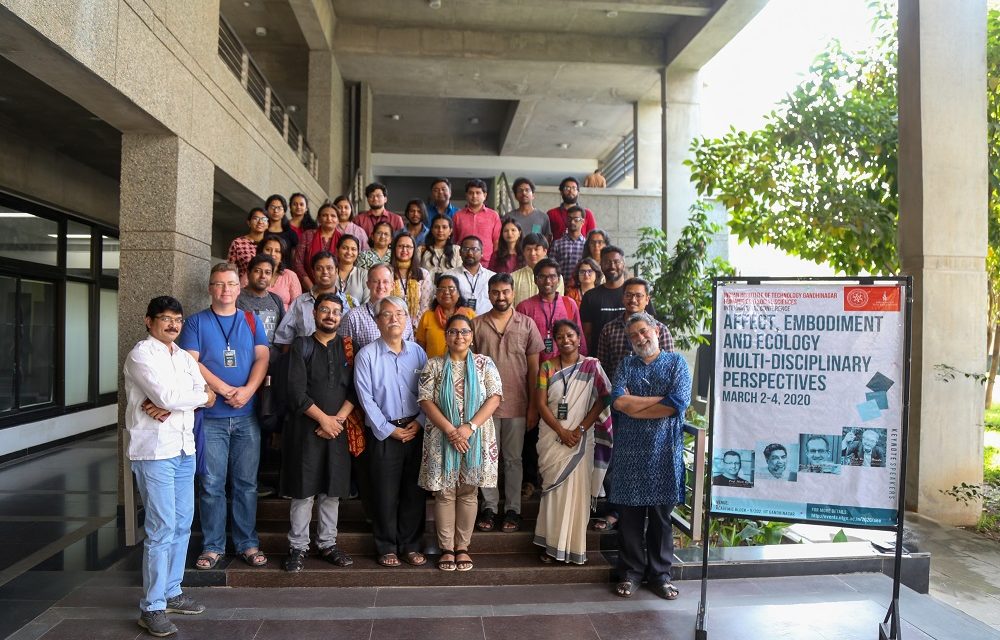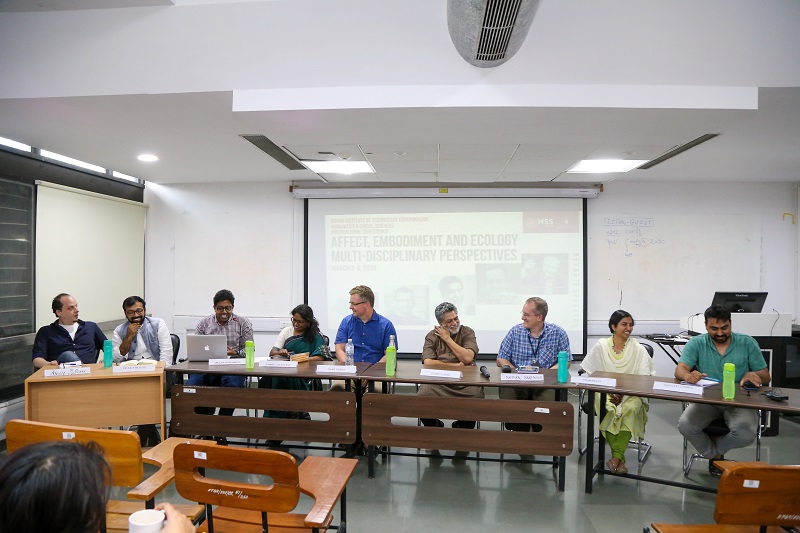A three-day international conference ‘Affect, Embodiment and Ecology: Multi-disciplinary Perspectives’ concluded yesterday at the Indian Institute of Technology Gandhinagar (IITGN). The conference discussed new ways of understanding the relationship between affect, embodiment and ecology amongst humans and non-humans from a multi-disciplinary perspective. Faculty and doctoral students from a variety of disciplines like philosophy, cognitive science, linguistics, anthropology, sociology, environmental studies, literature, and history, presented different angles on the rapidly changing ecological scenario through various sessions.
The conference began on March 02, 2020, with an inaugural session by the conference organisers from IITGN, Prof Ambika Aiyadurai, Prof Arka Chattopadhyay, and Prof Nishaant Choksi, who provided the context of the event. The conference had three keynote presentations by four speakers over the course of three days. The first keynote was delivered by Prof Mark Byron from the University of Sydney, Australia, on the subject – “Between Bone, Stone, and Wood: Embodiment, Ecology, and Materialism in Contemporary Literature”. In his speech, Prof Byron explained how the ecological developments such as species extinction, pollution, climate change etc. have shaped the direction of literary scholarship in profound ways. He gave references of various literary works of authors and poets such as Samuel Beckett, John Ruskin, Conrad Martens, and Ralph Waldo Emerson, in which they have narrated the characteristics of ecology, climatic conditions and its effects on our understanding of the global questions.
The second keynote on “Expressiveness and Affect: Everyday poetics in natural landscapes” was jointly given by Prof Nathan Badenoch from Kyoto University and Prof Toshiki Osada from Research Institute for Humanity and Nature, Kyoto, Japan. Both the speakers vividly depicted the links between expressiveness and affect in the experience of the natural environment. They provided examples of Santali language from Eastern India, Mundari language of Jharkhand, and Tibeto-Burman language Sida, all three of them South-Asian languages with a common feature of expressives in them, having words that ‘show’ rather than ‘tell’ to boost the imagery of its speakers. They explained that the form, meaning and feeling contribute to the affect that is achieved in the everyday poetics of this expressive language use.
The third and final keynote talk was delivered by Prof Anindya Sinha from National Institute of Advanced Studies, Bangalore, on “Ethos, Pathos, Logos: Affective Ethologies of Primate Lives”. He highlighted the ‘hybrid spaces’ – that are occupied by both animals and humans – in which one often profoundly affects the other. He then provided examples of various observations of the affective world of non-humans, focusing on bonnet macaques (monkeys in Bandipur National Park) and on humans, two primate species that have lived in close physical and emotional proximity across India for thousands of years. He explained various social behaviours observed in macaques, including the affects sensed in them, inter-individual communication, bonding and the forging of territoriality within macaque society, inter-species affects, novel forms of communication targeted at humans but never towards their own kind, and how humans respond to encounters generated by macaques and the relations between the two.
The conference was organised by the Humanities and Social Sciences discipline of IITGN and co-sponsored by the Indian Council of Social Science Research (ICSSR). Participants from ten different states of India, representing universities such as Jawaharlal Nehru University; IISER Bhopal; IIT Madras; Karnatak University; IIT Gandhinagar; University of Lucknow; St Xavier’s University Kolkata; English and Foreign Language University, Hyderabad; Homi Bhabha Center for Science Education, Mumbai; Deccan College, Pune; and many others, attended the conference.
This news was covered by some of the leading Indian newspapers and media agencies. Click on the link below to read more.




